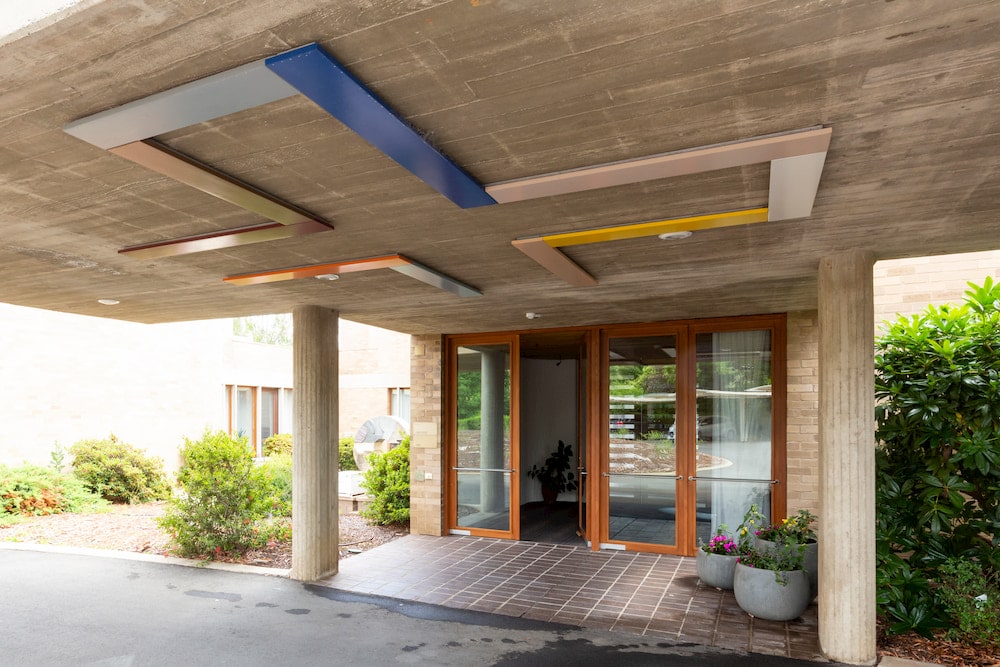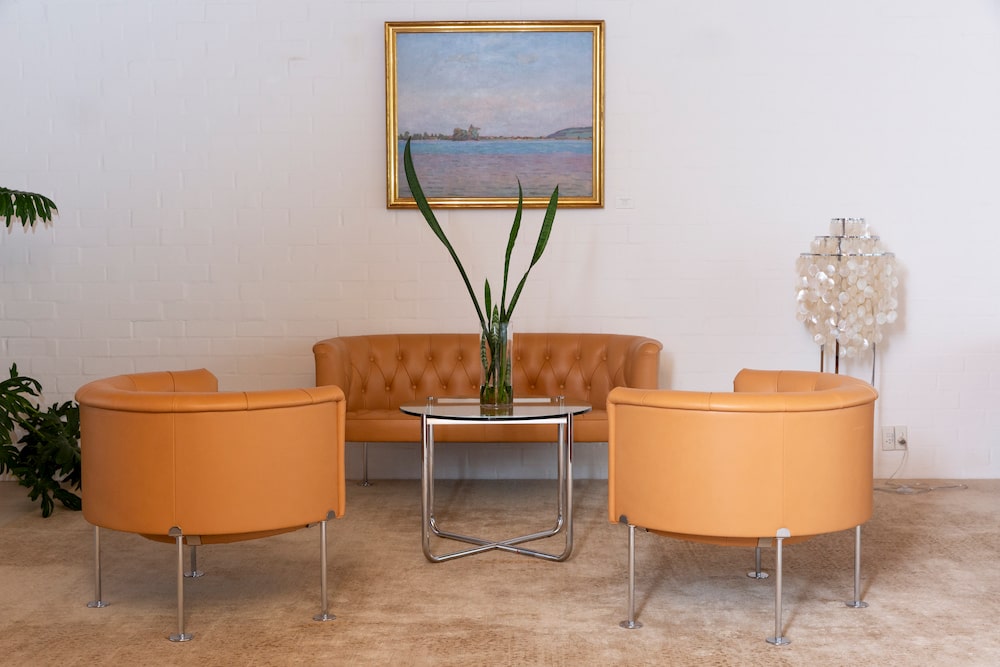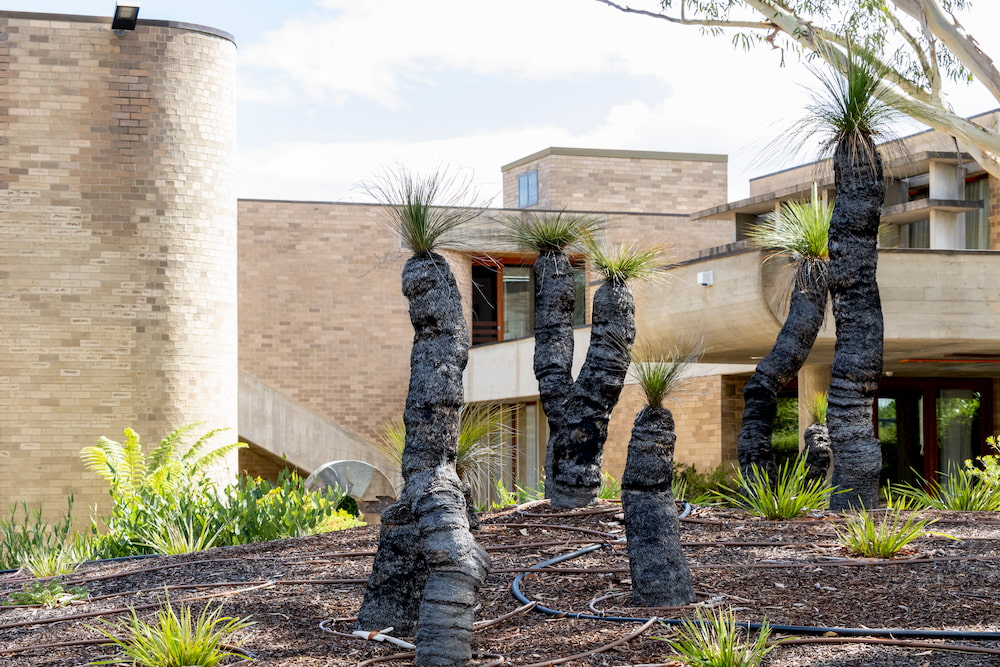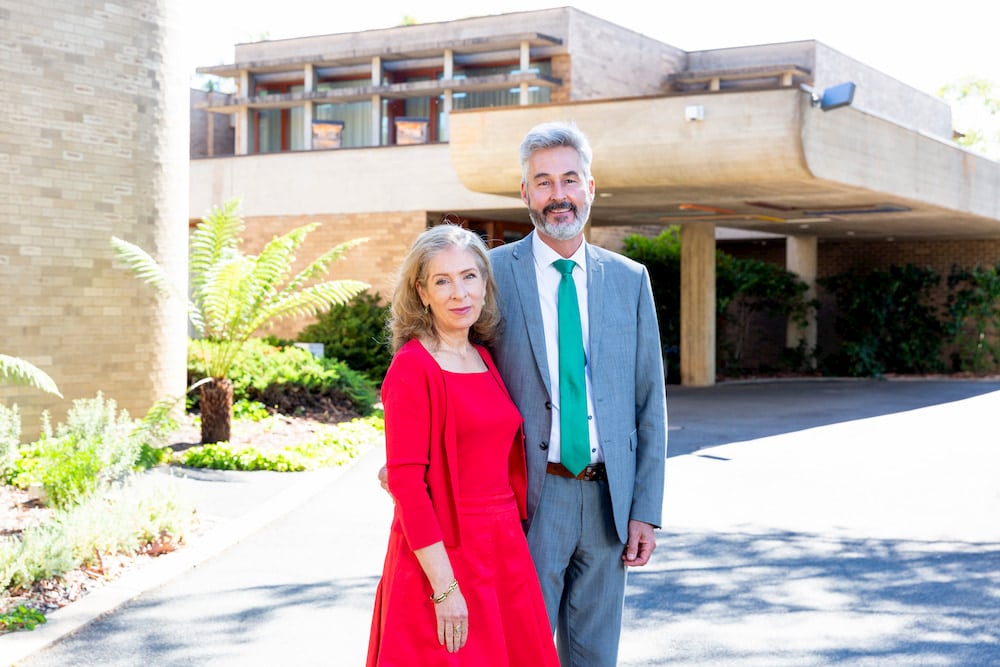Riding an e-bike, keeping bees, job sharing with his wife and solar charging their expansive 1970s Swiss-designed chancery, Switzerland’s Ambassador to Australia is the very model of the modern diplomat.
The diplomatic duo – His Excellency Pedro Zwahlen and Her Excellency Yasmine Chatila Zwahlen – share duties in Oceania (minus New Zealand), two teenagers and a gorgeous Swiss designed residence in Forrest, the work of Swiss architects, Hermann Baur and Hans Peter Baur.

The chancery and residence are combined in a two-storey mixed-material ensemble of exposed concrete and brick, sitting atop the highest point of the spacious property.
It’s a mix of open-yet-quiet and closed spaces, prioritising both visibility and privacy and grouping the two parts in a central courtyard with architectural themes dating back to medieval monasteries.
The sacred buildings of the famous Swiss architect known as Le Corbusier inspired the building design, which incorporates brise soleil and singing columns to balance the dignity of diplomatic representations with the modesty and restraint of a small country such as Switzerland.

The property’s 1975 inauguration followed the establishment of official diplomatic relations in 1961, however, the two countries connected much earlier.
Swiss consulates-general opened in both Sydney and Melbourne in the mid-1800s to service a strong Swiss contingency in the Australian colonies.

Significant numbers of Swiss immigrants came to Australia from the wine-growing Neuchâtel region, gold diggers from the Italian-speaking Ticino region, craftsmen, and merchants at around the turn-of-the-century, and the Swiss wives of former Polish POWs during the 1950s.
By 1972, around 9,000 Swiss were registered at consulates in Melbourne and Sydney.
Mr Zwahlen describes the embassy’s concept as “Swiss architecture set amongst the Australian bush” and since his 2017 arrival, he has gone to substantial lengths to fulfill that brief.
Through research and consultation with Indigenous Australians with knowledge of plants, Mr Zwahlen has introduced masses of indigenous flora into the bush setting, including his prized kangaroo paw, native grasses and edible shrubs.
But it’s the replanted Grass trees – so old they pre-date European settlement – that make the statement: “this is Australia”.
Mr Zwahlen said this garden gave him a reprieve from his work duties and was an outlet for his love of nature.

Along with restoring the garden to its full conceptual potential, Mr Zwahlen’s work has a similar motif, as the science enthusiast restores a historic scientific relationship between Switzerland and Australia; the beginning of which is captured in a framed photograph and hangs in the chancery.
It’s a photograph of the only non-Commonwealth member of the Australasian Antarctic Expedition of 1911-1914, Xavier Mertz, as he stands in front of a Swiss flag.
Being the first Swiss citizen to venture to the Antarctic, he planted it into the Antarctic floor.

From Basel, Switzerland, Mertz had joined young Australian geologist Douglas Mawson on his expedition to Antarctica to establish bases at Commonwealth Bay and the Shackleton Ice Shelf in pursuit of Australia’s dominant claim of Antarctic territory.
Mertz was a Doctor of Laws from the University of Bern but was chosen for the expedition due to his experience as a mountaineer and an accomplished skier, having won the ski-jumping championship of Switzerland in 1908, and champion of the world in 1909.
Rated as the best mountain climber in Switzerland, he had several first ascensions of the highest peaks in the Alps among his records.
Later he devoted himself to scientific pursuits, made a specialty of glacier and mountain formations, and received a doctorate in science from the University of Lausanne.
Mr Zwahlen said this cooperation mixed the adventurous Australian spirit with the accumulated Swiss knowledge and experience of icy temperatures and timing and scientific measurements.
Mertz did not survive the expedition. After a crevasse fall took out a dog team and most of the crew’s supplies, he began a desperate return march on starvation rations; two-thirds of the way into the journey, on 7 January 1913, Mertz died in a makeshift tent.

From that grim tale to the grandeur of diplomatic life, thanks to Mr Zwahlen’s work, Switzerland and Australia are back together in the Antarctic, as the Australian Antarctic Division (AAD) and the Swiss Polar Institute commit to advancing scientific research on and around the icy continent.
Mr Zwahlen said the commitment would enable and promote a greater cooperation on a broad range of high-altitude and extreme environments research, including Antarctic ecology, climate change, global sea level change, and ice core science.
Photography by Kerrie Brewer.



